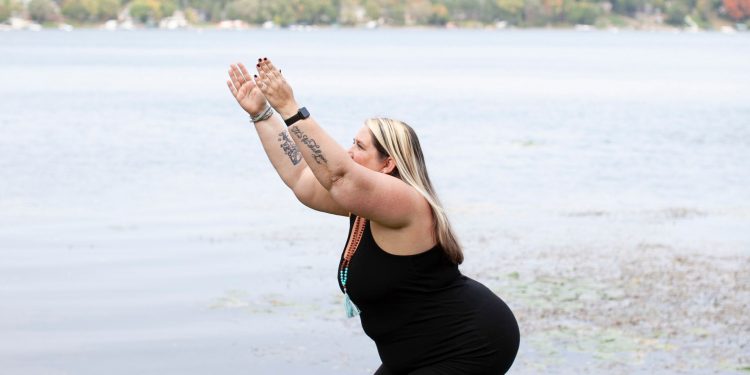by Amy Zellmer, Editor-in-chief
Yoga is a powerful tool for recovery after brain injury. Contrary to some beliefs, everyone can do yoga — you don’t need to be super flexible, have great balance, or even be able to stand up. The beauty of yoga is that every pose can be modified so anyone can be accommodated.
An important aspect of yoga is your breath. Connecting your breath to your body and flow, and getting oxygen flowing to your brain, is what makes it so powerful for recovery. Yoga is also a time to quiet the mind, to let anxiety and distracting thoughts drift away.
Chair Pose (utkatasana) is one of the most powerful poses to find the seat of power within your pelvis. In Sankrit, utkata means powerful, fierce.
Some of its many physical benefits include strengthening the ankles, thighs, calves, and spine. It stretches the shoulders and chest, and stimulates the abdominal organs, diaphragm, and heart.
From the yogic view of the body, when your pelvis is centered and aligned with gravity, there is a feeling of stamina and vitality within the pose.
Instructions:
- Stand in Mountain Pose and raise your arms parallel to the floor, palms facing inward.
- Bend your knees, keeping the thighs parallel to the floor. The torso will lean slightly forward over your thighs. Press the heads of the thigh bones down toward the heels.
- Pull your shoulder blades back, and your tailbone down toward the floor to keep your lower back long.
- Hold for 30 seconds. To come out of the pose, straighten your knees and release your arms to your sides.
Adjustments and modifications :
You can increase the strength of your thighs by squeezing a block between them during the pose.
If you are interested in learning more about yoga, check out
www.loveyourbrain.com and their yoga programs at partner studios throughout the U.S. which are completely free to brain injury survivors and caregivers.











